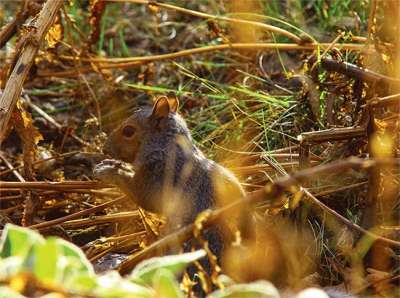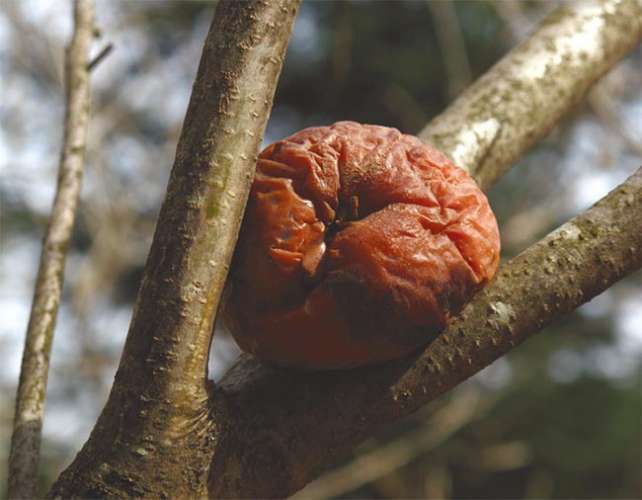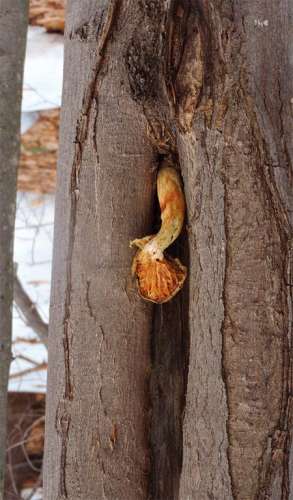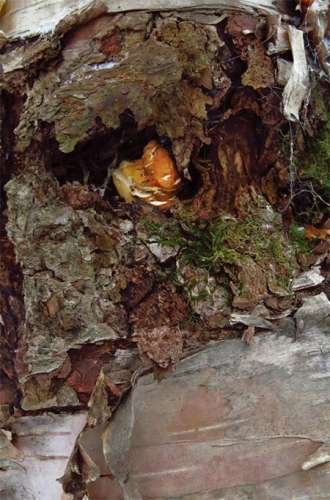We start putting food up in August – about the time we can smell the sun-warmed tomatoes, even before we gather them for canning. “Putting food up” is a curious expression. Originating back in the 1700s, this idiom means “preserving and storing food” – and that we certainly do. But “up” is hardly a useful image since we usually descend steep, awkward stairs into dark cellars to place our jars of preserved food on shelves.
“Up,” as a food-storage concept, applies more to the deliberate and creative methods used by gray and red squirrels. Yes, they will store food down low: the gray squirrel (Sciurus carolinensis) buries its food beneath the soil and duff in shallow excavations, and the red squirrel (Tamiasciurus hudsonicus) stores thousands of cones in ground-level middens. However, to our delight, squirrels also love to store food in high places where we can see them in action.
As a child, I was fascinated and amused to watch a gray squirrel carry a piece of dried corn up a black birch tree and place it inside a small stem cavity and then repeat the same journey again and again. Small pieces of mineral-rich bone, antler, and even turtle shells are also carried up to hiding places in trees to prevent their discovery and consumption by other mammals. Squirrels also cache the fruits of wild grape, apple, cherry, and hawthorn species inside small cavities in trees.
One telltale sign that squirrels are putting up food is the sight of mushrooms carefully placed along large branches or dangling like Christmas ornaments from the crotches of smaller limbs. Both gray and red squirrels store and eat dozens of species of fungi. Indeed, the storage and consumption behavior of squirrels and a number of other birds and mammals contributes to the spread of mycorrhizal fungi, which results in improved forest health, productivity, and diversity.
I was attempting to photograph an adolescent gray squirrel that was eating morsels of unidentified food. The young squirrel lifted what looked like a miniature potato to its mouth and consumed it. Then it collected another morsel and this time scampered away with it, climbing a nearby maple. This behavior was repeated four more times before the squirrel disappeared completely into the tree’s dense canopy. Upon closer investigation, I found the potato-like items were the tiny caps of false truffles (Rhizopogon spp.).
My most endearing experience with squirrel mushroom-caching occurred just outside my rental-cabin window on Big Moose Lake in the Adirondacks. Repeated trips of the red squirrel across the window screen to a tear in its corner tipped me off that something was up. There, inside the screen, was a neatly placed row of nine mushrooms, safely stored and drying on the protected window ledge. The squirrel caught me spying on her treasure and indignantly glared at me, flipping her tail with great annoyance – telling me to mind my own business, for she had important work to do.






Discussion *